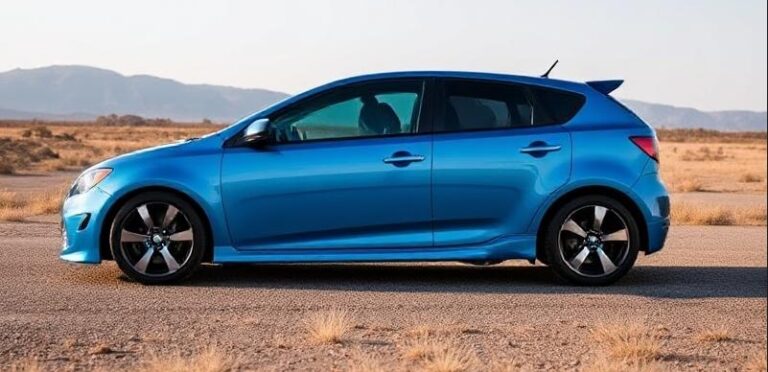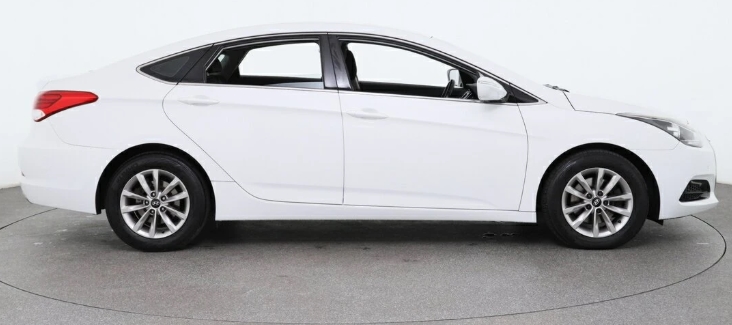The Evolution of the Toyota Sienna
The Toyota Sienna has established itself as a prominent player in the minivan market, renowned for its reliability, versatility, and family-friendly features. Over the decades, the Sienna has undergone significant transformations, reflecting advancements in automotive technology, design philosophy, and consumer preferences. This article provides a detailed overview of the evolution of the Toyota Sienna, including its production years, model generations, trim levels, and notable features.
Origins and First Generation (1997–2003)
Introduction and Launch
Toyota introduced the Sienna in 1997 as a purpose-built minivan designed primarily for the North American market. Prior to this, Toyota’s minivan offerings in North America included the Toyota Previa, but the Sienna was a dedicated model aimed at competing with the likes of the Honda Odyssey, Chrysler Town & Country, and Ford Windstar.
First Generation (XL20; 1997–2003)
- Production Years: 1997 to 2003
- Design & Features: The first-generation Sienna was built on a front-wheel-drive platform with optional all-wheel drive (AWD). It featured a unibody construction, which contributed to its car-like handling and ride comfort. The design emphasized practicality, with sliding doors for easy access in tight parking spaces.
- Engine Options:
- 3.0-liter 1MZ-FE V6 engine (142 horsepower)
- 2.4-liter 2AZ-FE four-cylinder (available in some markets)
- Transmission: 4-speed automatic transmission
- Model Trims:
- CE: Base trim with minimal features, aimed at budget-conscious buyers.
- LE: Mid-range trim offering additional comfort and convenience features.
- XLE: Top-tier trim with luxury features such as leather upholstery, power windows, and upgraded audio systems.
- Notable Features:
- Standard dual sliding doors (power on higher trims)
- Optional all-wheel drive
- Seating capacity of 7-8 passengers
The first-generation Sienna was praised for its spacious interior, smooth ride, and reliable performance. It quickly gained popularity among families seeking a practical, dependable minivan.
Second Generation (2004–2010)
Significant Updates
In 2003, Toyota launched the second-generation Sienna (XA30), which was introduced as a 2004 model. This generation marked a significant redesign, emphasizing style, safety, and technological improvements.
Second Generation (XL30; 2004–2010)
- Production Years: 2004 to 2010
- Design & Features: The styling was more angular and modern, with a focus on aerodynamics and aesthetics. The interior was more refined, with increased use of high-quality materials and improved ergonomics.
- Engine Options:
- 3.3-liter 3MZ-FE V6 engine (230 horsepower)
- 2.4-liter 2AZ-FE four-cylinder (in base models)
- Transmission: 5-speed automatic transmission
- Model Trims & Variants:
- CE: Entry-level with basic features.
- LE: Adds comfort and convenience features such as power accessories, upgraded audio, and cruise control.
- XLE: Luxury-oriented with leather seats, alloy wheels, and additional tech features.
- XLE Limited: Top-tier trim offering premium features such as a JBL audio system, navigation, and power sliding doors.
- Notable Features:
- Standard side-curtain airbags and stability control (depending on the model year).
- Optional AWD available across trims.
- Available rear-seat DVD entertainment system.
- Improved safety features and crash ratings.
Special Editions and Variants
During this generation, Toyota introduced special editions and packages—such as the “Limited” trim, which included high-end features, and the “Premium Package” with upgraded audio and navigation.
The second-generation Sienna solidified its reputation as a family vehicle, combining utility with comfort and safety.
Third Generation (2011–2020)
Major Redesign and Technological Advancements
The third-generation Sienna (XL40) was launched in 2010 as a 2011 model. It featured a bold new look, a focus on safety, and the incorporation of hybrid technology in later years.
Third Generation (XL40; 2011–2020)
- Production Years: 2011 to 2020
- Design & Features: The styling was more aggressive and modern, with a wider stance and more aerodynamic profile. The interior was enhanced with better materials, increased cargo space, and improved ergonomics.
- Engine Options:
- 3.5-liter 2GR-FE V6 engine (268 horsepower) available in non-hybrid models
- Hybrid Powertrain: Introduced in 2011, featuring a 2.7-liter 1.8-liter Atkinson-cycle four-cylinder engine paired with electric motors, producing a combined 187 horsepower.
- Transmission:
- 6-speed automatic for gasoline models
- Electronically controlled Continuously Variable Transmission (CVT) for hybrids
- Trim Levels & Packages:
- Base: Simplest configuration, offering essential features.
- LE: Adds power sliding doors, upgraded audio, and additional comfort features.
- XLE: Leather upholstery, power-adjustable seats, and upgraded infotainment.
- Limited: Top-tier with premium audio, navigation, ventilated seats, and advanced safety features.
- SE: Sportier trim with unique styling cues and suspension tuning.
- Hybrid Models:
- Became a major selling point for the Sienna, with the hybrid powertrain available across trim levels, starting with the LE and XLE trims.
- Offered excellent fuel economy (up to 36 mpg city/highway).
- Notable Features:
- Standard stability control, traction control, and multiple airbags.
- Optional rear-seat entertainment systems with larger displays.
- Advanced safety features like backup cameras, parking sensors, and optional blind-spot monitoring.
Special Editions & Notable Variants
The third-generation Sienna offered multiple packages, such as the “Premium Package” that included upgraded audio and navigation, and special editions with unique styling elements.
This generation marked the peak of the Sienna’s hybrid technology integration, reinforcing its reputation for fuel efficiency and eco-friendliness.
Fourth Generation (2021–Present)
Recent Redesign and Future Outlook
In 2020, Toyota unveiled the fourth-generation Sienna, which debuted as a 2021 model. This generation introduced a complete redesign, emphasizing modern styling, advanced technology, and a shift to a new powertrain architecture.
Fourth Generation (XL40; 2021–Present)
- Production Years: 2021 to present
- Design & Features: The latest Sienna features a bold, minivan-specific SUV-inspired exterior with sharp lines and a wider stance. The interior is highly modern, with a digital instrument cluster, large touchscreen infotainment system, and premium materials.
- Engine & Powertrain:
- Fully redesigned hybrid-only powertrain, with a 2.5-liter 4-cylinder engine paired with electric motors, producing a combined 245 horsepower.
- The new platform offers better handling, ride comfort, and efficiency.
- Transmission: Electronically controlled CVT
- Trim Levels:
- LE: Standard features include a 7-inch touchscreen, Apple CarPlay, Android Auto, and Amazon Alexa compatibility.
- XLE: Adds leather seats, power moonroof, and larger touchscreen options.
- Limited: Includes premium audio, navigation, ventilated seats, and advanced safety features.
- Platinum: The top-tier trim, offering luxury features such as a surround-view camera system, premium audio, and advanced driver-assist technologies.
- Notable Features:
- Standard Toyota Safety Sense 2.0 suite, including adaptive cruise control, lane departure alert, and pre-collision systems.
- Available all-wheel drive on select trims.
- Modern safety features like blind-spot monitoring, rear cross-traffic alert, and digital rearview mirror.
- Innovations:
- The 2021 Sienna is the first Toyota minivan to be built exclusively as a hybrid, emphasizing Toyota’s push toward electrification.
We LOVE cars & cruising around, but sometimes day trips to explore new cities are required (with family or friends) for a spice of variety in your life!
So GO explore!
Cruises & Day/Night City Tours to: Baltimore, Boston, Chicago, Marina Del Ray, New York, Niagara, Philadelphia, San Diego, San Francisco, Toronto, Washington DC, etc.:

.
Summary of Model Years and Trim Progression
| Generation | Production Years | Notable Features & Changes | Trim Levels & Variants |
|---|---|---|---|
| First | 1997–2003 | Basic unibody design, reliability | CE, LE, XLE, XLE Limited |
| Second | 2004–2010 | Sportier styling, safety tech, AWD options | CE, LE, XLE, XLE Limited, Special Editions |
| Third | 2011–2020 | Hybrid introduction, modern tech, safety features | Base, LE, XLE, Limited, SE, Hybrid variants |
| Fourth | 2021–present | Complete redesign, hybrid-only, advanced safety | LE, XLE, Limited, Platinum |
Conclusion
The Toyota Sienna has evolved from a practical, straightforward minivan into a sophisticated family vehicle with a focus on safety, comfort, and fuel efficiency. Its journey from the first generation in 1997 to the latest models showcases Toyota’s commitment to innovation and customer needs.
Throughout its history, the Sienna has maintained its reputation for dependability and versatility. The shift to a hybrid-only powertrain in the latest generation underscores Toyota’s leadership in hybrid technology and its vision for a sustainable future.
As the automotive industry continues to evolve, the Toyota Sienna is poised to remain a key player in the minivan segment, blending traditional reliability with cutting-edge technology to meet the demands of modern families.








